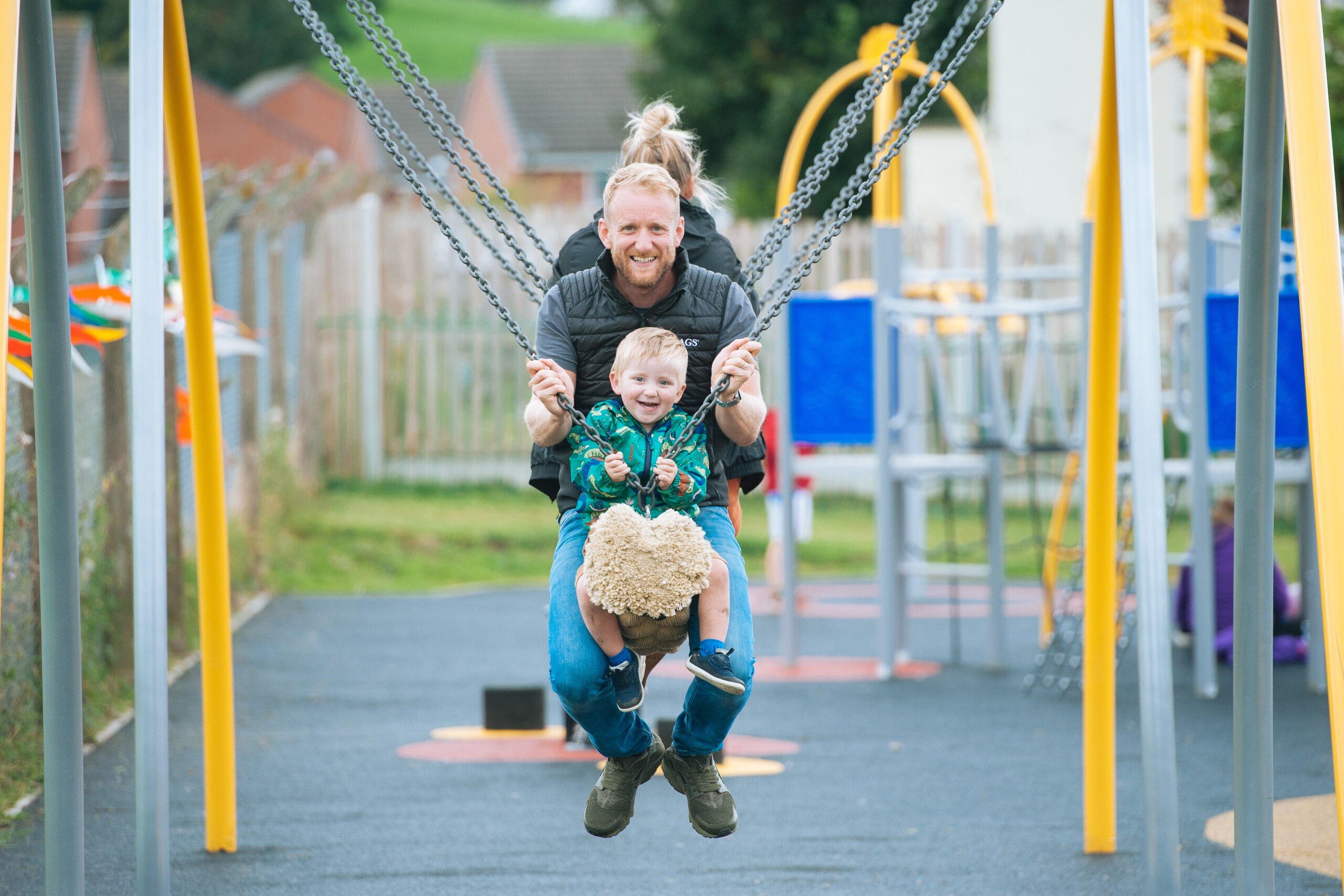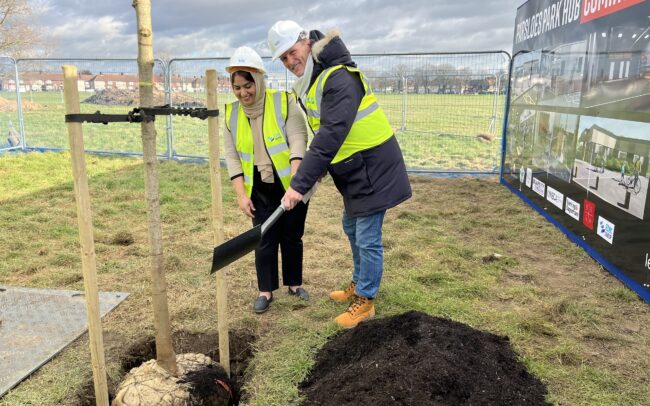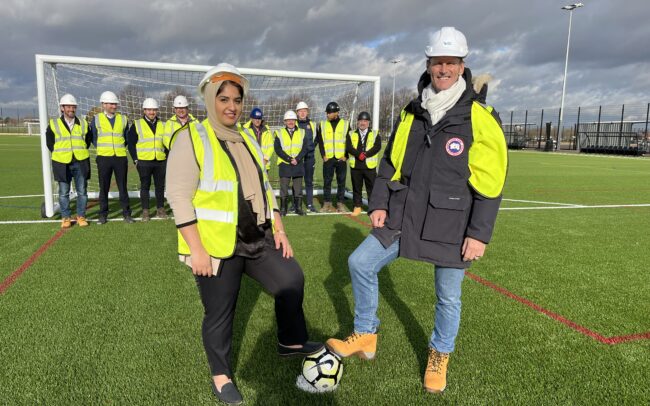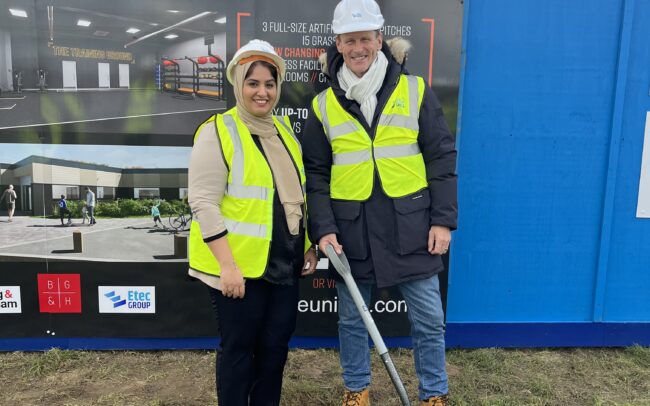Developing the Great Outdoors
- Huge community health benefits from active green spaces
- Creating innovative, engaging and inclusive destination attractions
- Sustainable, revenue-generating spaces
The APSE State of UK Public Parks report, published in 2021, reported that parks budgets had seen a decrease of £690m over the past decade, with declining conditions and more pressure on external sources of income.
However, public satisfaction remained high despite the reductions in budgets and maintenance standards. If Government funding is to continue to fall then parks need to position themselves as self-funding ventures with activities and attractions that increase dwell time, attract new visitors and prompt multiple return visits.
The abundance of green spaces and public parks across the UK makes it possible for most in society to experience these places regularly, but there is a disparity when it comes to the size, scale and type of parks in urban, suburban and rural locations, making accessibility difficult for some. What cannot be denied are the health benefits that green spaces can provide. Whether it’s a family enjoying some quality time on the swings, a local community coming together for a flower show, or a local group of volunteers looking after allotments, outdoor spaces deliver huge benefits, both mentally and physically.
With the PlayStation-generation being brought up in an ever-developing digital world, the concerns over children’s health is something parks can address. There is extensive evidence that proves children are more active when they are outside compared to when they are indoors. Furthermore, when children are outside, they spend more time being active compared to when they are indoors¹. And, it is the parents who play an important role in providing children with outdoor opportunities, particularly when holding a positive attitude towards overall physical activity and recreation/nature². Parents look for different and enticing ways to entertain both themselves and their children in their free time, so parks need to adapt to offer services and attractions that meet these needs.


Other research shows that park access is associated with increased levels of physical activity. Evidence shows that proximity to and use of parks, green space, and tree cover are all correlated with greater levels of physical activity³. A number of successful Levelling Up bids have focussed on public transport schemes to improve the connectivity of local communities with work, education, retail and green spaces. Notably Lancashire County Council was awarded £50m of the funding allocation to improve public transport, walking and cycling routes⁴.
Beyond the connection of parks and physical activity, usage of park services is associated with reductions in various negative health outcomes and illnesses. Spending even 120 minutes in green spaces has been associated with higher levels of reported good health and well-being⁵. Evidence has linked time spent in parks and green spaces with reductions in complications caused by chronic diseases such as diabetes and heart disease⁶. Further evidence from a large-scale Dutch survey suggests that proximity to green space has a positive effect on self-perceived general physical health, with a larger effect for the elderly, youth, and families with low incomes⁷.
So what are the options for our green spaces? Alliance Leisure have been working with a number of local authorities to scope innovative projects that enhance, retain and diversify the offerings within a park setting. The examples below show this range of developments, from improvements to existing F&B facilities through to large-scale multi-million pound transformations.
Leybourne Lakes Country Park
This project saw a £890k investment in the café building on the edge of one of the lakes in the 230-acre Green Flag award-winning country park. The existing water sports facilities needed modernising and a new destination eco café was also built. Cutting edge carbon-reducing technology was used, including a water source heat pump in the lake alongside solar power panels on the roof. Find out more HERE.
King George’s Playing Fields
Opened in the Spring of 2022, King George’s Playing Fields (KGPF) was a multi-million pound investment on behalf of Brentwood Council, which was part of the council’s 10-year Leisure Strategy. The existing recreation ground had some activity provision already with a 1970s pavilion housing the local golf club. The new facilities included a new 2-storey pavilion comprising of changing facilities, golf clubhouse, meeting rooms, café, soft play facility, TAGactive adventure centre and a sensory room. Outside in the park, a new adventure play area was installed next to a splashpad which is chargeable and brings in new revenue to the park. More details HERE.
Central Park – in construction
This project aims to improve the facilities of the park across four phases in order to have the least impact on park users, with stage one of the project expected to complete in April of this year. Some of the facilities that are being redeveloped include new trees and wildflowers, refurbishment of the tennis courts, and the addition of approximately one mile of new pathways. We have partnered with GLE to utilise soil importation as part of the project and reduce costs. find out more about soil importation HERE.
Wirral Pump Track
Investment in open spaces does not have to run into the millions, as can be seen from this small project in Wallasey on the Wirral. A £94k investment was made by Wirral Council to provide an asphalt pump track to ensure young people in the community had activity facilities on their doorstep. More details HERE.
Parsloes Park – in construction
Due to open in the winter of 2023, the Parsloes Park project involves the demolition and re-building of the sports pavilion to provide a new café, gym, fitness studio, changing facilities, meeting rooms and classroom spaces. The new Hub is being developed next to 16 new grass pitches and 3 full-size 3G pitches. Funding was sourced from multiple partners including the Premier League, Football Foundation and the Council. Read more HERE.
With more local authority planning strategies placing greater emphasis on the importance of parks and greens spaces there are lots of opportunities on the horizon. For more ideas on developing the great outdoors visit our website HERE.
Sources
1 Tremblay, M, et al. Position Statement on Active Outdoor Play. Int. J. Environ. Res. Public Health 2015, 12(6), 6475-6505; https://doi.org/10.3390/ijerph120606475
2 Lee, EY., Bains, A., Hunter, S. et al. Systematic review of the correlates of outdoor play and time among children aged 3-12 years. Int J Behav Nutr Phys Act 18, 41 (2021). https://doi.org/10.1186/s12966-021-01097-9
3 Eichinger et al. 2015; Pretty et al. 2005
5 White et al. 2019
6 Bowler et al. 2010; NRPA 2015
7 Maas et al. 2006
Outdoor spaces in the leisure press:
Outdoor Gyms https://www.healthclubmanagement.co.uk/health-club-management-features/Interview-Georgie-Delaney/35332
Outdoor Exercise https://www.healthclubmanagement.co.uk/health-club-management-features/Industry-insights-Out-the-Box/35159?source=search
Hamilton case study https://www.healthclubmanagement.co.uk/health-club-management-features/Town-planning-Play-full-city/35053?source=search
Inclusive skateparks https://www.paf-media.co.uk/making-skateparks-inclusive
Collaboration during the pandemic https://www.paf-media.co.uk/fields-in-trust-and-parkrun-celebrate-parks-and-green-spaces
Outdoor Play Initiatives https://www.paf-media.co.uk/irish-government-invests-in-outdoor-play



















